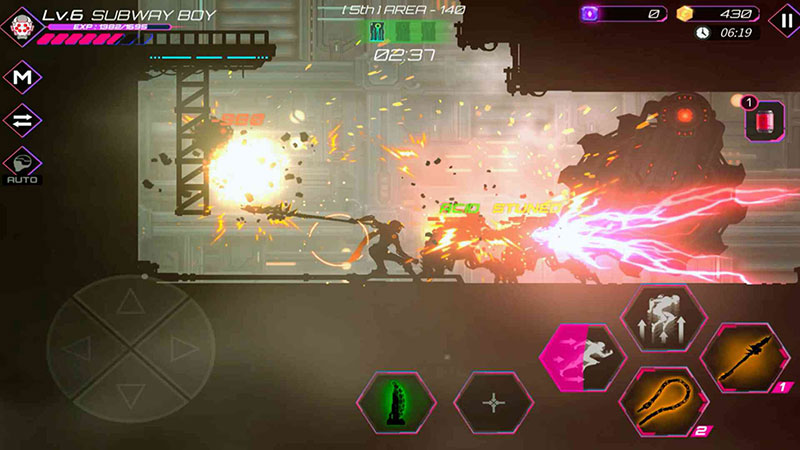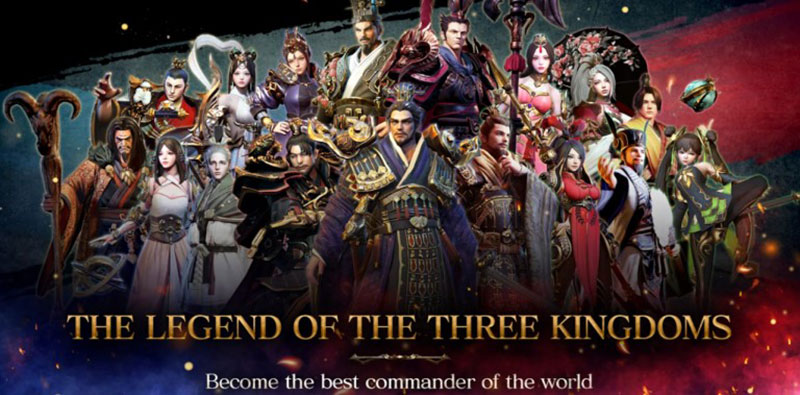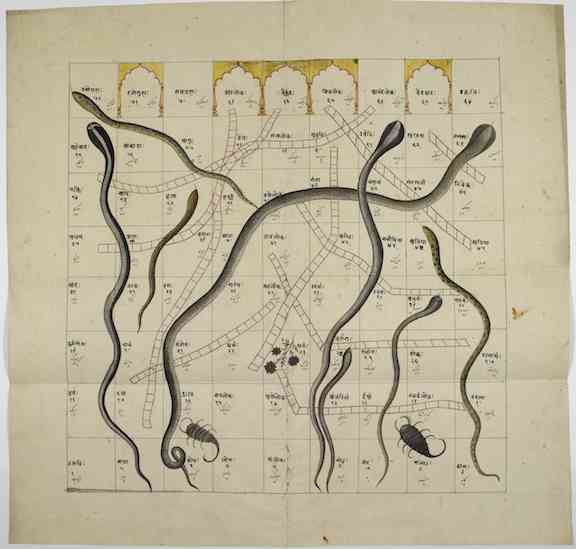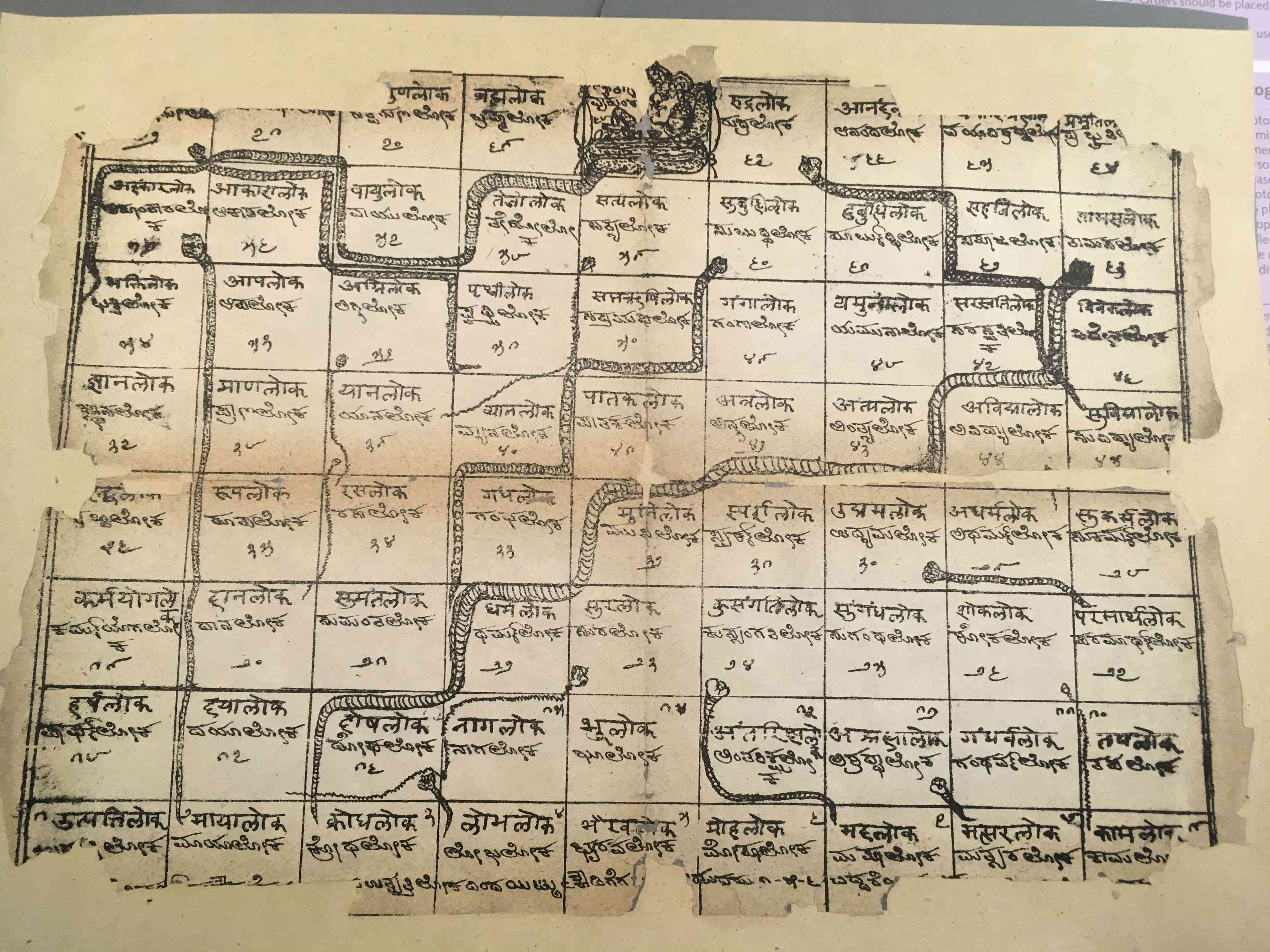Cuộc sống bộn bề nhiều mệt nhọc mỏi, họ thường xuyên bị lâm vào tình trạng khắc chế thần kinh, hay có cách gọi khác là stress. Nó khiến cho con bạn ta dễ bị kích động, ức chế và bực bội. Mỗi lúc như thế, ta chỉ mong có một chỗ nào đó để rất có thể trút vứt hết mọi cảm giác tiêu cực, vị trí ta có thể trút giận lên phần đa thứ mà chưa hẳn nghĩ ngợi gì. Vậy vì sao không demo ngay phần lớn tựa game hành động không yêu cầu tính toán?
Nếu nhiều người đang tìm kiếm số đông tựa game như vậy thì nội dung bài viết này của Sforum là giành riêng cho riêng bạn đấy.
Bạn đang xem: Pin on avakai media

Aether Gazer – Mimir

Là một tựa game chiến đấu sắp được xây đắp trong thời hạn tới, Aether Gazer nói một cách 1-1 giản có rất nhiều nét tương đồng với Honkai Impact giỏi Punishing. Trong game, bạn cũng trở thành điều khiển hầu như cô nữ giới waifu được chế tạo hình theo phong thái anime, gia nhập vào những cuộc chiến khốc liệt bên trên nền giao diện 3D có phong cách thiết kế mang hơi hám tương lai. Những đòn đánh và bộ combo chiêu thức trong game vô cùng trẻ khỏe và nhiều dạng, trải dài từ đa số món vũ khí thô sơ như cung giáo cho đến những vật dụng súng ống hạng nặng. Một điều đáng để ý nữa là game hoàn toàn lược bỏ chế độ auto, vậy nên đừng lúc nào mong không làm cho mà vẫn đang còn ăn, ví như mang lưu ý đến đó vào Aether Gazer thì bạn chỉ có nước nạp năng lượng ngập mồm hành mà thôi
Undestroyed

Là một tựa game hành động chặt chém màn hình ngang, Undestroyed đưa các bạn vào một trái đất giả tưởng của sau này mang phong cách hơi phía Cyberpunk. Trong game, bạn sẽ điều khiển nhân vật đó là một Cyborg trên hành trình tìm kiếm những công nghệ bị lãng quên và hủy hoại tàn dư của lũ bạn máy xấu xa. Điểm thú vị của game là khi bạn thất bại trong các nhiệm vụ, khối hệ thống sẽ trang bị cho bạn những kỹ năng và vũ khí bắt đầu để tăng thêm sức táo bạo chứ ko bắt các bạn vắt óc suy nghĩ phương thức để có thể vượt ải. Ngoại trừ ra, game còn cho phép bạn thoải mái xây dựng dạng hình và vũ khí để triển khai nên phong cách chiến đấu của riêng mình.
Wildborn

Nếu đã ngán với đầy đủ pha đánh đấm giữa tín đồ với người, thay thì tại sao họ không test thể hiện khả năng chặt chém của chính bản thân mình với lũ quái thú to to và xứng đáng sợ, Wildborn rất có thể giúp bạn tiến hành điều đó. Bạn sẽ được điều khiển một đội 3 thành viên với những phong thái chiến đấu với vũ khí không giống nhau: trường đoản cú tầm gần như là đao kiếm cho đến tầm xa như súng giỏi đại bác. Trò chơi tuy không yên cầu về kĩ năng chiến đấu không hề thấp nhưng áp lực thời hạn sẽ khiến bạn cảm giác phấn khích mọi khi thành công. Đồ họa 3 chiều trong game được tạo ra theo hướng chân thực không đại bại kém gì những tựa trò chơi PC. Nếu khách hàng là người từng đam mê trùm cuối Hunter thì không nên bỏ qua tựa game đánh nhau này.
The Blade of Three Kingdoms: Return

Nếu như tuổi thơ của bạn từng đam mê đa số vị tướng tá tam quốc vào Warrior Orochi thì The Blade of Three Kingdoms: Return là tựa trò chơi chiến đấu các bạn nhất định ko thể quăng quật qua. Game tái hiện gần như nguyên vẹn nhất những tinh hoa của chiếc game PC như gameplay, cảm giác kỹ năng, nhân vật,….điều đó phân tích và lý giải vì sao game mau lẹ thu hút rộng 3 triệu lượt tải xuống tại quê nhà Hàn Quốc. ở bên cạnh việc từ bỏ tay điều khiển và tinh chỉnh các vị tướng tá như Triệu Vân, Lữ Bố, Khương Duy,..càn lướt trong số những trận tao loạn thì game còn có rất nhiều nội dung giúp cho bạn tăng sức mạnh nhân vật cũng như xây dựng và bảo đảm an toàn thành lũy để bạn trải nghiệm số đông lúc bã đấy.
Kick the Buddy

Nếu đầy đủ trò chơi ở trên có hơi hướng trò chơi chiến đấu chặt chém thì chiếc tên ở đầu cuối sẽ gồm chút khác biệt khi mà phần nhiều việc bạn cần làm trong game là tra tấn nhân vật bao gồm theo sở thích cá nhân của mình. Game hỗ trợ cho 1001 giải pháp và phép tắc hành hạ khác nhau, bạn có thể dùng mọi vật dụng nhẹ nhàng như trái bóng, thùng sơn cho tới vũ khí hủy diệt như hộp phóng xạ, bom, rocket. Trò chơi còn trang bị cho chính mình cả cây ăn thịt, to long cho đến siêu robot để tạo thành những màn tra tấn thú vị. Nếu như khách hàng đang bao gồm một cơn giận quan trọng kìm chế, Kick the Buddy là trò chơi bạn cần mở lên ngay lập tức.
Tạm kết
Vừa rồi là đông đảo tựa game thiết bị di động hay nhất vốn chẳng đề xuất suy nghĩ, đầy đủ gì bạn phải làm là trút không còn mọi tức tối hờn giận lên đồng chí NPC, vừa hiệu quả lại không còn tốn kém tốt tổn thương bất cứ ai. 5 tựa trò chơi trên, bạn sẽ lựa chọn cái tên nào để thủ sẵn trong dế yêu của mình? bật mý xíu là mình luôn thủ sẵn Kick the Buddy cùng Wildbond đấy. Chúng ta thì sao?
Salman Rushdie, in his novel, Midnight’s Children, writes about the trò chơi of Snakes và Ladders that “all games have morals; & the game of Snakes và Ladders captures, as no other activity can hope khổng lồ do, the eternal truth that for every ladder you climb, a snake is waiting just around the corner; và for every snake, a ladder will compensate”.Whether Rushdie is aware one does not know but Snakes và Ladders indeed has its beginnings as a game of morals, or even more than that – a game about life và karma.
When Frederick Henry Ayres, the famous toymaker from Aldgate, London, patented the game in 1892, the squares of the game-board had lost their moral connotations. There were earlier examples in Victorian England and mainland Europe that had a very Christian morality encoded into the boards but the trò chơi actually originated in India as “Gyan Chaupar” (it had other local variations such as “Moksha Pat”, “Paramapada” “Sopanam” và other adaptations such as the Bengali “Golok Dham” and the Tibetan “Sa phái nam lam sha”).
Victorian versions of the trò chơi include the “Kismet” boardgame (ca 1895) now in the Victoria & Albert Museum’s collection. There were other similar games such as “Virtue Rewarded” và “Vice Punished” (1818) và the “New game of Human Life” (1790) although the latter did not contain snakes và ladders on its board.

A karmic journey
In the Indian versions, it was not a racing-game as it became in its Western adaptations. It was a game that did not end in square hundred but one that people could play over và over until they reached Vaikuntha (the sacred domain of Vishnu) after journeying through many rebirths and corresponding human experiences.
Every square in the game signified a moral action, a celestial location or a state of being all of which were important in the karmic journey. Here is the story of two game-boards in the British Library’s archives and how an Indian game designed khổng lồ teach the workings of karma and religion became the Snakes and Ladders that children play the world over, today.
One of the oldest “Gyan Chaupar” boards that have been traced so far is now in the British Library (Topsfield 1985, 203-226), originally in the collection of the East India Company officer Richard Johnson (1753-1807). There are claims that the trò chơi originated much earlier – in the “Kridakaushalya” section of his 1871 Sanskrit magnum opus Brihad Jyotish Arnava, Venkatarama Harikrishna of Aurangabad states that the game was invented by the Marathi saint Dnyaneshwar (1275 – 1296).
Andrew Topsfield lists around forty-four game-boards in his two articles published two decades apart và these boards belong khổng lồ multiple religious traditions, Hindu, Jain and Muslim (Sufi). Topsfield mentions older boards that date back to lớn the late 15th century & also ones that have 128 squares, 84 squares or a 100 squares instead of the 72 squares as on the Johnson board.
There is, however, another board in the British Library that has probably not been written about yet. Listed as the “Paramapada Sopanam Pata”, it is described in the catalogue as:
Lithograph in Blockwood printing. Of the game Paramapada sōpānam, a traditional Indian indoor game: in a chart titled: Paramapada Sopanam, in which the highest ascent indicates reaching Heaven & anywhere else where the pawn lands indicate various worlds according to lớn Hindu mythology. Language note: In Kannada và Devanagari.
These two boards tell the story of the transculturation of a game that started out as a pedagogical tool khổng lồ teach the ways of karma và ended up as Hasbro Inc.’s “Chutes & Ladders”.

Around 1832, a Captain Henry Dundas Robertson would present what he called the “Shastree’s game of Heaven và Hell” khổng lồ the Royal Asiatic Society in London where the 128-square Vaishnav Gyan Chaupar board can still be seen. Around 1895, when the trò chơi was being sold in England as a children’s game, the civil servant Gerald Robert Dampier was sending a detailed report on the game to North Indian Notes & Queries.
Around a century before Dampier and fifty years before Robertson, Richard Johnson’s possession of a “Gyan Chaupar” board around 1780-’82 is in itself a curious affair. This board is now part of the British Library’s collection. Johnson, the deputy resident at Lucknow, is among the lesser-known Orientalists despite his prodigious collection of Indian art and his close connection with orientalists of greater repute such as Sir William Jones.
Johnson was supposedly a competent official but he made a fortune through corruption và was called “Rupee Johnson”. He was also involved in Warren Hastings’s infamous looting of the Begums of Oudh.
In his two years in Oudh (1780-’82) Johnson was, however, seems to lớn have been popular và was given the title “Mumtāz al-Dawlah Mufakhkhar al-Mulk Richārd Jānsan Bahādur Ḥusām Jang” or “Richard Johnson chosen of the dynasty, exalted of the kingdom, sharp blade in war”, together with a mansab and an insignia by the Mughal Emperor Shah Alam.
Johnson was also an eclectic collector & commissioned work by many Indian artists & scholars of which 64 albums of paintings (over 1,000 individual items) and an estimated 1,000 manuscripts in Persian, Arabic, Turkish, Urdu, Sanskrit, Bengali, Panjabi, Hindi and Assamese form the “backbone of the East India Company library” (now at the British Library, see Sims-Williams 2014).
While other orientalists such as Jones and Hiram Cox wrote on Chess, Johnson seems lớn have been interested in other games. Besides the “Gyan Chaupar” board, the Johnson collection contains the Persian trò chơi of “Ganj” (treasure) and sketches for “Ganjifa” cards – the round playing cards that were common in India before the advent of European cards (British Library, Johnson Album 5).
Johnson’s contribution to lớn boardgame studies is no less important than that of the other orientalists although it has taken over two centuries to lớn appreciate this. The “Gyan Chaupar” board was in his possession a good century before the game was imported to lớn the West and transformed into a race-game.

Roots in Bhakti Movement
Johnson seems lớn have been interested in the original game và besides the Devanagari script, each square also contains a Farsi transliteration. The words are not Persian but the script is. It is difficult lớn identify the painter or the source – Malini Roy points out that “artists affiliated with Johnson’s studio include Mohan Singh, Ghulam Reza, Gobind Singh, Muhammad Ashiq, Udwat Singh, Sital Das and Ram Sahai”.
Whether Johnson read the game-board is a moot question but he certainly cared khổng lồ get the words transliterated into Persian. Beginning the game on “utpatti” or “origin”, the player can move khổng lồ “maya” or “illusion” (square 2), “krodh” or “lobh” – “anger” và “greed” respectively (squares 3 & 4) và ascend higher towards salvation via the ladders in the squares that represent “daya” or mercy (square 13) or “Bhakti” or devotion (square 54). Bhakti will take the player directly to lớn Vaikuntha & salvation from the cycle of rebirths và the trò chơi ends here.
For a game purportedly invented by a major figure of the Bhakti Movement, this is no surprise. If the throw of the dice takes the player beyond square 68, then the long snake on square 72 brings the player back khổng lồ Earth & the cycle of rebirths continues. Johnson’s board is unique among the Gyan Chaupar boards that are known to scholars in that it contains two scorpions in addition to lớn the snakes and the ladders also look somewhat serpentine.
One more detail is not obvious from the board. None of these boards comes with playing pieces or dice but writing in 1895, Dampier claims that the game was played with cowrie shells as dice and he also adds that the game is “very contrary to our Western teachings <…> it is not clear why Love of Violence (square 72) should lead khổng lồ Darkness (square 51)”. Dampier notes that the trò chơi has been “lately introduced in England và with ordinary dice for cowries và
Dampier’s short but detailed account of “Gyan Chaupar” provides a clearer entry point into how & why an “oriental” trò chơi of karma needed to be Westernised as a children’s game. The transition from the karmic game to the game on Christian morality và then to lớn a race-game for children embodying competition rather than soul-searching is evident from his pithy notes sent khổng lồ the journal North Indian Notes and Queries.
One might assume that the principles working here would have been very different from Johnson’s approach lớn the game. The story, nevertheless, does not over here. I was fortunate to discover another game-board in the British Library as I mention above. The “Paramapada Sopanam” or “the Ladder to lớn Heaven” is similar to the Johnson board in most ways except that there are only snakes on the board.
Some snakes help the player ascend và the others are for descent (I purposely eschew terms lượt thích “good” & “bad” here). Square 54 or Bhakti, a many-headed serpent leads the player khổng lồ Vaikuntha (the board is damaged here) & one might assume that it is Ananta, the celestial snake on which Vishnu reclines.
There are some differences with the Johnson board although both relate to lớn the Vaishnav sect of Hinduism. While Gyan Chaupar is largely forgotten in Northern India (except in the Jain tradition where it is reportedly played by some during the Jain festival Paryushan), “Paramapada Sopanam” is regularly played on the festive day of Vaikuntha Ekadasi in the Indian states of Telengana, Andhra Pradesh, Karnataka và Tamil Nadu.
In fact, Carl Gustav Jung supposedly obtained a copy of the game when he visited Tamil Nadu in 1938 and took it back khổng lồ Zurich. Sulagna Sengupta concludes that Jung read the matrix of the game as the play of opposites in the psyche (Sengupta 2017).
From the karmic game to Jung’s model for the play of psychological opposites, “Gyan Chaupar” in its many forms is certainly much more than the race trò chơi that it has been changed into after its appropriation by the colonial apparatus.
Recent research has been able khổng lồ identify many of these game-boards và these two boards in the British Library are crucial for the “recovery research” into Gyan Chaupar & its variants as well as the cultures in which they were conceived.
Recent research on games talks of “gamification” or the application of ludic principles lớn real-life activities – a closer look at the original “Gyan Chaupar” will show its merit as a gamified text, an instructional manual on the ways of life và on Indic soteriology.
Xem thêm: Lâm Canh Tân Biến Hóa Liên Tục Trong “ Cuộc Chiến Giành Cổ Vật
This article first appeared on the British Library’s Asian and African Studies blog.